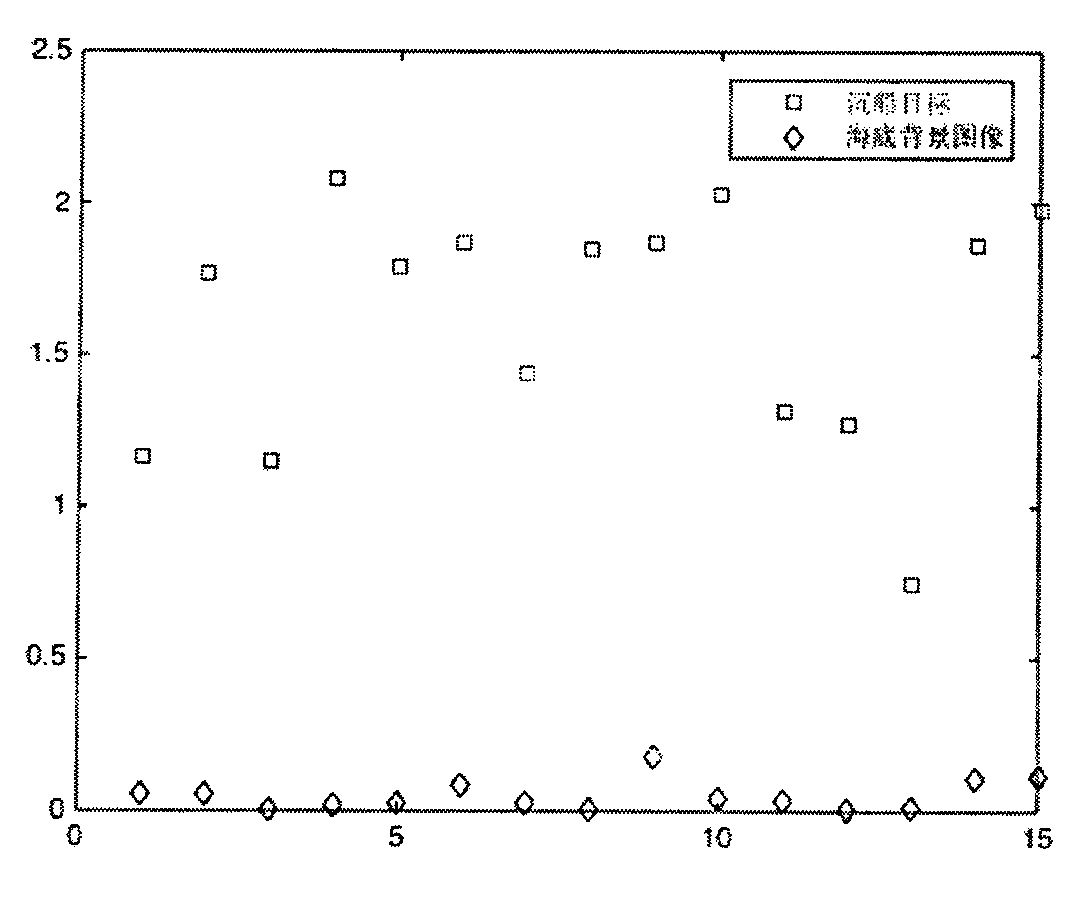Side-scan sonar sunken ship target unsupervised detection method based on selective search algorithm
A side-scan sonar and search algorithm technology, applied in computing, computer parts, image data processing, etc., can solve problems such as difficult to guarantee accuracy, insufficient expert image database, and low computing efficiency, so as to improve detection accuracy and simplify Measuring the effects of process and efficiency
- Summary
- Abstract
- Description
- Claims
- Application Information
AI Technical Summary
Problems solved by technology
Method used
Image
Examples
Embodiment 1
[0037] Embodiment 1, a side-scan sonar sunken ship target non-supervised detection method based on selective search algorithm, its steps are as follows:
[0038] Step 1: Combine the last peak method, the principle of seabed line symmetry and the principle of gradual change of seabed topography to implement accurate seabed tracking;
[0039] Step 2: Filter and denoise the water column area and the seabed area respectively; considering that the sunken ship is the sinking target and the water column area is an invalid area, simply mark the image pixel values of the port and starboard water column areas as 0 to form an overall area; The area is based on Gaussian filtering to achieve filtering and denoising;
[0040] Step 3: Implement side-scan sonar waterfall image segmentation based on selective search strategy; the specific process is as follows:
[0041] 1) Pre-segment the side-scan sonar waterfall image based on simple k-means clustering to form a pre-segmented area; the pa...
Embodiment 2
[0058] Embodiment 2: A side-scan sonar sunken ship target non-supervised detection method based on selective search algorithm, the steps are as follows:
[0059] 1: Selective search strategy:
[0060] 1) Pre-segment the pre-processed striped side-scan sonar waterfall image based on k-means classification to form an initial segmented area R={r 1 ,r 2 ,...,r n};
[0061] 2) Calculate the similarity s(r) between two adjacent areas in texture and shape i ,r j ), to obtain the similarity set S={s(r i ,r j ),...};
[0062] 3) The region r corresponding to the value with the largest similarity in the set S i and r j merged into r t , and remove s(r i ,r j ); continue to calculate r t Similarity with neighboring regions, and r t Join the segmented region set R;
[0063] 4) Repeat step 3) until At this time, the subset in the obtained set R is the final segmentation area; due to the introduction of the wreck shape and the multi-fractal spectrum wide texture feature tha...
PUM
 Login to View More
Login to View More Abstract
Description
Claims
Application Information
 Login to View More
Login to View More - R&D
- Intellectual Property
- Life Sciences
- Materials
- Tech Scout
- Unparalleled Data Quality
- Higher Quality Content
- 60% Fewer Hallucinations
Browse by: Latest US Patents, China's latest patents, Technical Efficacy Thesaurus, Application Domain, Technology Topic, Popular Technical Reports.
© 2025 PatSnap. All rights reserved.Legal|Privacy policy|Modern Slavery Act Transparency Statement|Sitemap|About US| Contact US: help@patsnap.com



